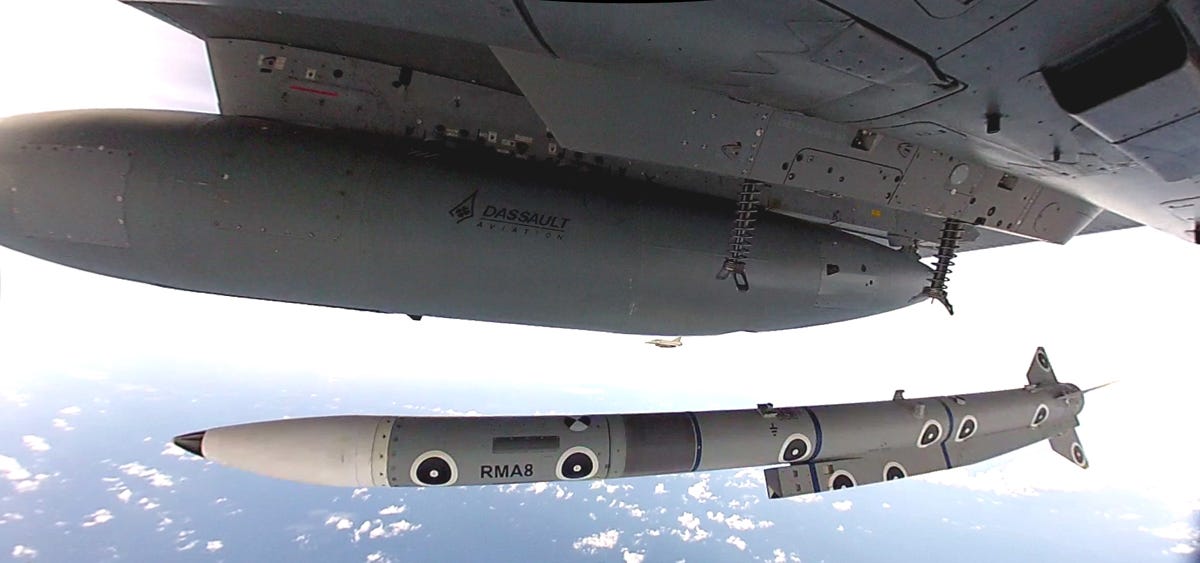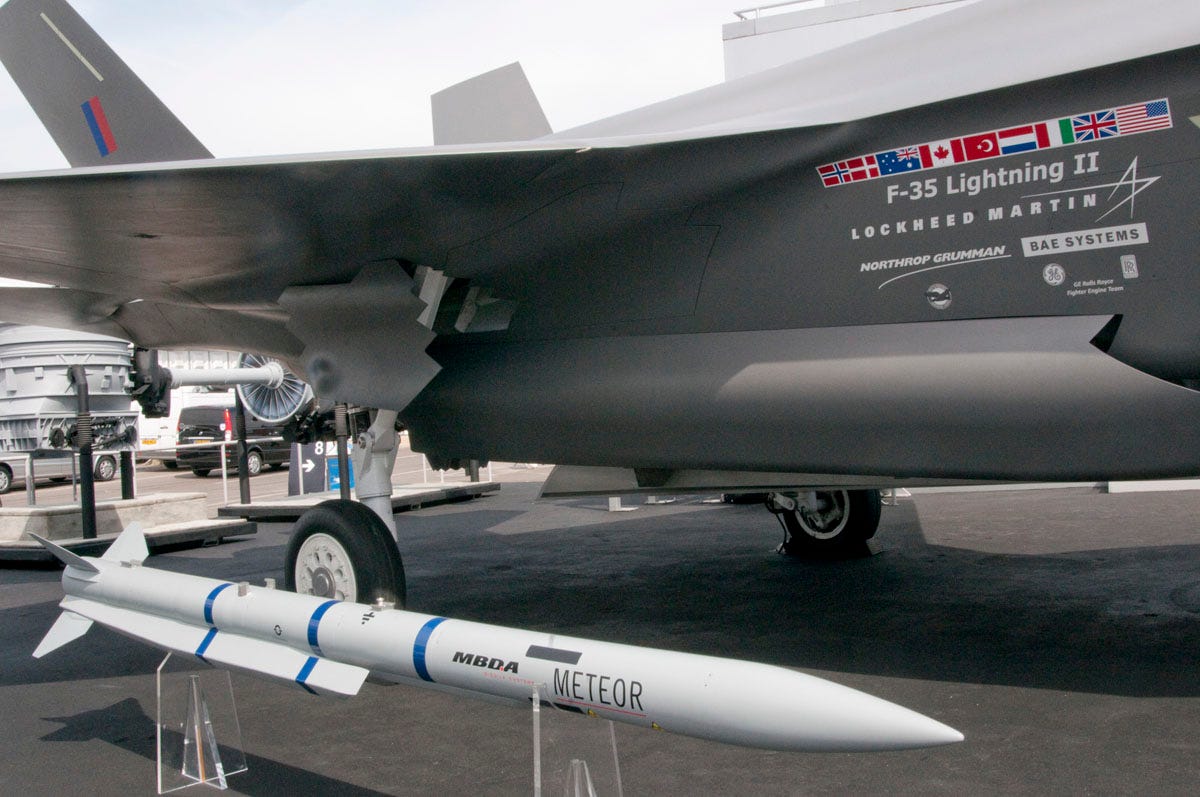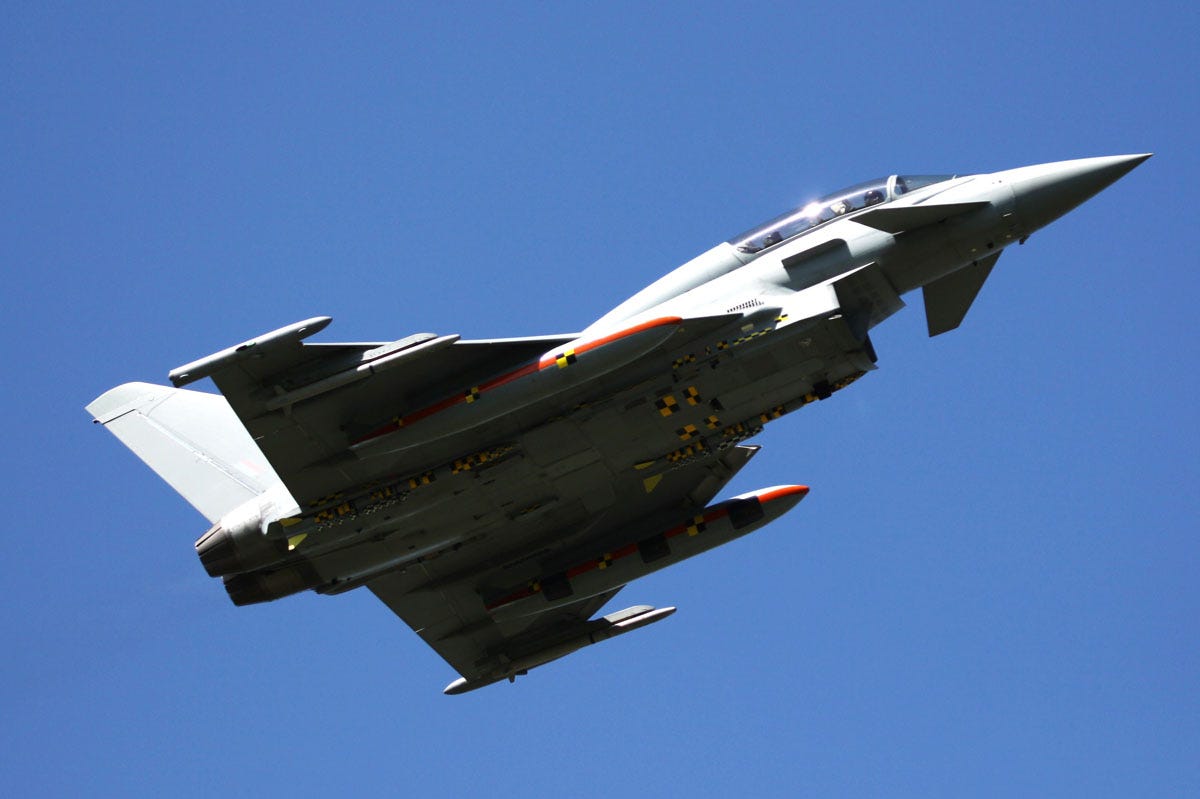The air force of neutral Sweden may not be one of the big-hitters in terms of global power projection. Indeed, it has barely even undertaken combat operations.
When Swedish jets went into action over Libya in 2011, during Operation Unified Protector, the government only allowed them to fly reconnaissance missions. The previous time Swedish fighters deployed in combat was almost 50 years earlier, during the Congo crisis.
However, Sweden always has taken its air defense very seriously—and has a proven track record of developing innovative, often indigenous solutions to meet its air-power needs. Now, the Swedish air force is about to field what is arguably the most capable air-to-air missile in the world.
The Meteor is not a Swedish product per se, but it will see its initial operational service as part of the armament of the Swedish air force’s fleet of Saab JAS 39C/D Gripen fighters.
 Sweden is part of a multinational European team that has developed the Meteor Beyond-Visual-Range Air-to-Air Missile. France, Germany, Italy, Spain and the U.K. also are involved. Pan-European missile house MBDA is the prime contractor.
Sweden is part of a multinational European team that has developed the Meteor Beyond-Visual-Range Air-to-Air Missile. France, Germany, Italy, Spain and the U.K. also are involved. Pan-European missile house MBDA is the prime contractor.
A French air force Rafale, operating from the Cazaux Flight Test Center in southwestern France, launches a test Meteor in 2012. MBDA photo
The Swedish connection
It was back in September 2010 that Sweden elected to integrate the Meteor ramjet-powered missile with the Gripen, allocating the appropriate funds—as yet undisclosed—and finalizing contractual paperwork.
As well as Sweden becoming the first nation with an operational Meteor capability, it was important that the same option be made available to Gripen export customers. Foreign countries that have so far signed up for the Swedish multi-role fighter include Brazil, the Czech Republic, Hungary, South Africa and Thailand.
In its initial application on the Swedish air force Gripen, the Meteor comes as part of the Materiel System 20 update. MS20 is due to enter service in 2015, at which point the Swedish air force and the Gripen will be the first air arm and the first platform with fully operational Meteors.
Sweden, and local fighter-maker Saab, have ensured that they play a central role in the Meteor’s fortunes. In doing so, they have established a significant lead in the air-dominance race. While both China and Russia have also been working on ramjet-powered active-radar-guided missiles, the Meteor looks like it will beat all of its rivals into service.
The ramjet powerplant means that the Meteor is an air-breathing air-to-air munition—the first to enter service. Thanks to its efficient ramjet motor, the Meteor is a true very-long-range missile, a class that, since the retirement of the Phoenix-and-F-14 combination, is entirely absent from the U.S. military.
In air-to-air missile combat, it’s not just the sheer reach of a missile that’s critical. Equally important is the end-game performance—the ability of a missile to muster up enough energy at the end of its flightpath to battle a maneuvering target that is doing all it can to shake off the homing missile.
“No-escape zone” is the term for the area in which an enemy aircraft will not be able to use pure agility to evade a missile.
According to the manufacturer, in a head-on engagement the Meteor provides a no-escape zone three times greater than that of a conventionally powered missile. With the Meteor launched in pursuit of a target—a tail-chase engagement—the Meteor is five times as lethal as a conventional equivalent such as the American AMRAAM.
Unlike a normal rocket motor, a ramjet can throttle for more or less power. The Meteor therefore can conserve its precious energy until the last moment, rather than exhausting itself in the boost or cruise phases. Instead, as it nears the target, the BVRAAM just keeps getting faster. The target aircraft doesn’t stand a chance. Or so the theory goes.
While the ramjet engine ensures improved approach speed, range and agility, especially in the most important final phase of target engagement, an on-board datalink adds another string to the Meteor’s bow. Using the datalink means that target information updates while the missile is already streaking towards its quarry.
Re-targeting data can even come from a third party—i.e., from a platform other than the launch aircraft. A two-way datalink only became available on the latest AIM-120D model of America’s AMRAAM.
Missile manufacturers are notoriously coy when it comes to releasing details of the their products’ performance. What little MBDA has said regarding Meteor indicates a range significantly greater than 62 miles and sustained speeds of at least Mach 4.
 By contrast, in its official fact sheet the U.S. Air Force attributes the early-model AIM-120 with a range of 20-plus miles and “supersonic” speed. The AIM-120D version should extend the baseline range by around 50 percent. The actual effective ranges of both the Meteor and the AMRAAM are very likely to be well in excess of published figures.
By contrast, in its official fact sheet the U.S. Air Force attributes the early-model AIM-120 with a range of 20-plus miles and “supersonic” speed. The AIM-120D version should extend the baseline range by around 50 percent. The actual effective ranges of both the Meteor and the AMRAAM are very likely to be well in excess of published figures.
A Meteor BVRAAM alongside a mock-up of the British F-35B Lightning II. MBDA photo
Final hurdles
Sweden was responsible for the final series of tests that readied the Meteor for service. Using the Vidsel test range 560 miles north of Stockholm in the Arctic Circle, Saab and FMV—the Swedish Defense Materiel Administration—successfully integrated the BVRAAM with the Gripen fighter during test firings last March. In particular, this latest test program proved the missile’s seeker performance and range.
The March 2014 tests saw a Gripen launch two Meteors at remotely-controlled targets over consecutive days. The missiles separated safely from the launch aircraft and the datalink between the aircraft and missile worked as advertised.
“Parameters included firings at both low and high altitude and at speed while the launch aircraft was maneuvering, as well as demonstrating a long engagement [and] engagement of maneuvering targets,” Saab reported.
In the wake of the successful trials this spring, Saab continued to work on Gripen-Meteor integration, including testing of the Gripen’s flight qualities and validation of carefree aircraft handling.
 Before the end of this year, the Swedes should have worked out the last few bugs from MS20, and operational test and evaluation will be complete. The Gripen-Meteor combo then will be ready for front-line service.
Before the end of this year, the Swedes should have worked out the last few bugs from MS20, and operational test and evaluation will be complete. The Gripen-Meteor combo then will be ready for front-line service.
Meteor instrumented test rounds under the belly of a British Typhoon. Eurofighter/Bryan Walsh photo
Who’s getting Meteor?
Sweden, of course, has already signed a contract for delivery of production Meteors. Other operators that have ordered the BVRAAM include France for the Dassault Rafale F3R and Germany, Spain and the U.K. for their Eurofighter Typhoons.
Some of the latter will ally the Meteor with a new, powerful electronically-scanned area radar on upgraded Typhoons. The Eurofighters should be flying with Meteors in 2017, while Rafales will receive the weapon a year later.
The Meteor is therefore unique in that it is being added to all three of Western Europe’s in-production fighters. MBDA has already received orders for over 1,000 Meteor rounds.
The cost of procuring Meteor is hard to come by. Limited figures came to light in Germany in 2013. The Luftwaffe will acquire 150 missiles at a cost of around $323 million, plus a further $175 million for integration. That compares favorably with a price tag of $423 million for 180 AIM-120Ds, which the Pentagon paid in 2012.
Farther in the future, it’s possible that the American-made Lockheed Martin F-35 Lightning II stealth fighter might also get Meteor, significantly boosting its air-to-air prowess.
The aging AMRAAM remains the leading medium-range air-to-air missile for most Western air forces, but even the latest AIM-120D version lacks range and energy. As far as the F-35 is concerned, the AMRAAM also is unable to exploit the full potential of the new jet’s AN/APG-81 electronically-scanned radar.
One F-35 customer known to have an eye on Meteor is Japan. With China developing ramjet-powered missiles of its own, Tokyo might feel it needs to maintain parity.
On July 17, the Japanese government announced that it will cooperate with the U.K. to furnish an alternative missile for the F-35. This almost certainly will involve an advanced development of the Meteor.
For its part, Japan can offer advanced seeker technology, perhaps providing an electronically-scanned missile seeker like that fitted to the Mitsubishi Electric AAM-4B air-to-air missile.
A powerful new seeker would be especially beneficial for a weapon with Meteor’s extended range. While Meteor is a true fire-and-forget weapon, in practice the missile’s active radar seeker works only in the terminal phase due to its relatively limited range compared to that of the launching fighter.
An on-board electronic array would allow a revamped Meteor to go active much sooner, in turn allowing the launching aircraft to stop transmitting guidance updates earlier … and turn away from the target.
Integration of the Meteor on the Lightning II is by no means straightforward, however. The history of adding non-U.S. weapons to U.S. fighters is not a distinguished one. MBDA has made overtures to the American military in the past, but has invariably faced stiff resistance from protective U.S. industry.
Exactly how the F-35 would carry the BVRAAM is uncertain, too. Whatis clear is that it won’t be possible until the F-35 gets the Block 4 software release. That means it won’t be happening any time soon. Lockheed has yet to even receive contracts to develop the Block 4 software.
But if Japan and the U.K. eventually can put the world’s most lethal air-to-air missile on their F-35s, there should be nothing stopping the U.S. from doing the same.
We’ve published a new book all about the F-35. Sign up for a daily War is Boring email update here. Subscribe to WIB’s RSS feed hereand follow the main page here.
No comments:
Post a Comment